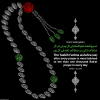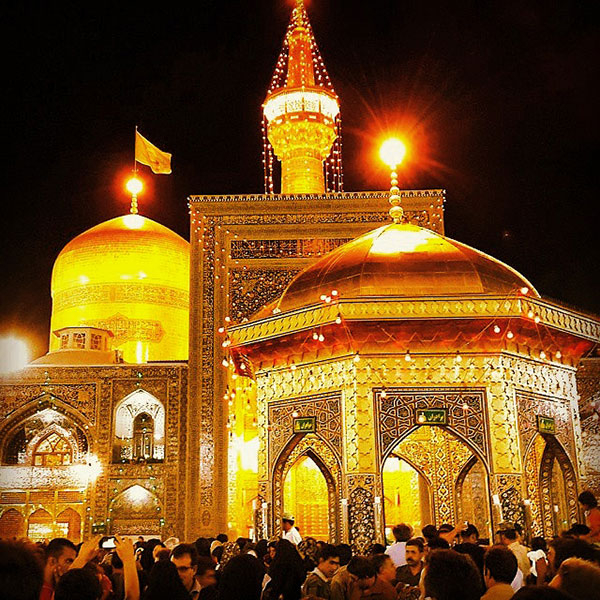 Salaam and welcome to the first part of our special program for the month of Moharram "Along with Imam Husain (AS), From Medina to Karbala."
Salaam and welcome to the first part of our special program for the month of Moharram "Along with Imam Husain (AS), From Medina to Karbala."
The month of Moharram has started. It is the month of mourning for the martyrs of the greatest ever tragedy the world has ever seen. It is the month on whose advent the faithful don black clothes and put up black banners on roofs, walls and streets, highlighting the words and objectives of the Chief of Martyrs, Imam Husain (AS) – the grandson of Prophet Mohammad (SAWA). Incidentally, today is the 2nd of Moharram, the day on which Imam Husain (AS) stepped on the fateful field of Karbala.
When Imam Husain (AS) arrived in Iraq with his family and companions in 61 AH, Karbala had neither any population of note nor any urban settlement. The Imam called for the chiefs of the local Bani Asad tribe and bought the vast tract on which the battle would take place and where the martyrs would be buried. It was after his martyrdom and burial in Ha'er that Karbala gradually took up the shape of a town. Perhaps a question might arise as to why within 50 years after the passing away of the Prophet, Muslims became so heartless that his grandson was killed cruelly in Karbala?
A glance at history unravels the sad turn of events. No sooner had the Prophet left the mortal world that a group of his companions usurped the political leadership of the Islamic state by depriving Imam Ali (AS), the divinely-designated vicegerent at Ghadeer-Khom, of his right to lead. Thereafter matters worsened, and the Omayyads, who before their belated conversion to Islam were the avowed enemies of the Prophet, were appointed as governors of the vast province of Syria.
Here Mu'awiyya Ibn Abu Sufyan consolidated his rule, and during the caliphate of the Commander of the Faithful, Imam Ali (AS), rebelled against the central authority. In 40 AH, Imam Ali (AS) was martyred in Kufa by a renegade, and Mw'awiyya taking advantage of the situation indulged in extensive propaganda as well as armed insurrection against the authority of the Prophet's elder grandson and second Infallible Heir, Imam Hasan (AS). The Imam realizing the sensitivity of the situation and in order to save Muslim blood resorted to a master stroke of strategy to unveil hypocrisy by conditionally relinquishing the caliphate with specified terms that Mu'awiyya will act according to the tenets of Islam, will not slander the memory of Imam Ali (AS), and will not appoint any successor as caliph. All these and other conditions were broken by Mu'waiyya, who in 60 AH, ten years after martyring Imam Hasan (AS) through poison, appointed his libertine son Yazid as caliph, but advised him against demanding allegiance from the Prophet's younger grandson, Imam Husain (AS).
However, contrary to the advice of his father, Yazid demanded allegiance and the Imam refusing to acknowledge his rule, decided to leave Medina and move to Mecca, which as the centre of pilgrimage where people from all over the Muslim world visit, would arouse conscience as to why the Prophet's grandson had left his hometown and taken residence in this city. The journey of the Imam from Medina to Mecca and from Mecca to Karbala, which lasted 160 days, is thus full of lessons for us.
Imam Husain (AS) left Medina on Rajab 28 and arrived on the 3rd of Sha'ban, incidentally his birth anniversary, in the holy city of Mecca – the inviolable place where the shedding of blood is divinely prohibited. In Mecca, the Imam stayed until 8th of Zil-Hijja, and on learning that Yazid had sent assassins disguised as pilgrims with daggers hidden inside the Ahram or the pilgrim attire, he decided to leave in order to prevent the Hajj rituals from such an abominable crime. He traveled to the plan of Arafaat, as the pilgrims do, and from here he changed his course towards Iraq. We should endeavor to study the objectives of the great movement of Imam Husain (AS).
It was obvious that the society in those days was not the true Islamic society that the Prophet had established. The Omayyads by paying lip service to Islam had revived the ancient pagan customs. Under such circumstances, a personality like Imam Husain (AS) could not keep silent and witness these deviating and dangerous currents. The sermons, speeches, aphorisms and letters of Imam Husain (AS) during his journey from Medina to Karbala and until his martyrdom reflect the regrettable situation of that time of the Muslim society and the Imam's goal of his uprising.
Yazid had written to his governor in Medina, Waleed, to extract allegiance from Imam Husain (AS) without giving him respite. The Imam replied to Waleed: We are the family of the Prophet on whom God has bestowed His mercy. Islam started with our family and will be with us till the end. But the person that you want me to give allegiance is a drunkard, corrupt, and killer of innocent people. Is it right that a person like me give allegiance to a person like Yazid.
Thus Imam Hussein explicitly expressed his opposition to Yazid and did not recognize his rule. He recounted the merits of the Prophet's Ahl al-Bayt as the true and righteous leaders, thus exposing to all that unqualified elements are not entitled to the leadership of the Islamic state. The Imam knew that Yazid's intention was to accomplish the objectives of his pagan grandfather Abu Sufyan in obliterating Islam and the Qur'an by taking over the caliphate.
Mohammad Hanfiyah, a son of Imam Ali (AS) through a different wife, suggested to Imam Husain (AS) not to stay in a specific place and relocate to some far off lands where he can build his base and invite people towards his cause, and even if the people do not support him, at least he could be safe from harm. The Imam said that even if no place remains safe for him in the entire world, he will not acknowledge Yazid's rule. He told Mohammad Hanafiyah: God bless you brother, you did your duty but I better know my duty and I have decided to move to Mecca with my true followers. We are prepared for this journey.
The Imam, however, told Mohammad Hanafiyah to stay and send him the reports of everyday events that passed in Medina during his absence. He told him that the only person who was capable of fulfilling this sensitive and dangerous responsibility of reporting about the reaction of the regime in Medina and the opinion of the masses there, as an aware and well-informed observer, was Muhammad Hanafiyah. Therefore he had to stay behind and carry out this duty assigned to him.
Before his departure, Imam Husain (AS) visited the tomb of his grandfather Prophet Mohammad (SAWA), where he prayed saying: O My God! This is the tomb of Your Prophet and I am the son of the Prophet's daughter. You know the course of events. O My God! I strive to enjoin the good and forbid the wrong. O God Almighty! I ask You, for the honour and dignity of this tomb and who reposes in peace in it, to keep on the path which makes You and Your Prophet content.

















